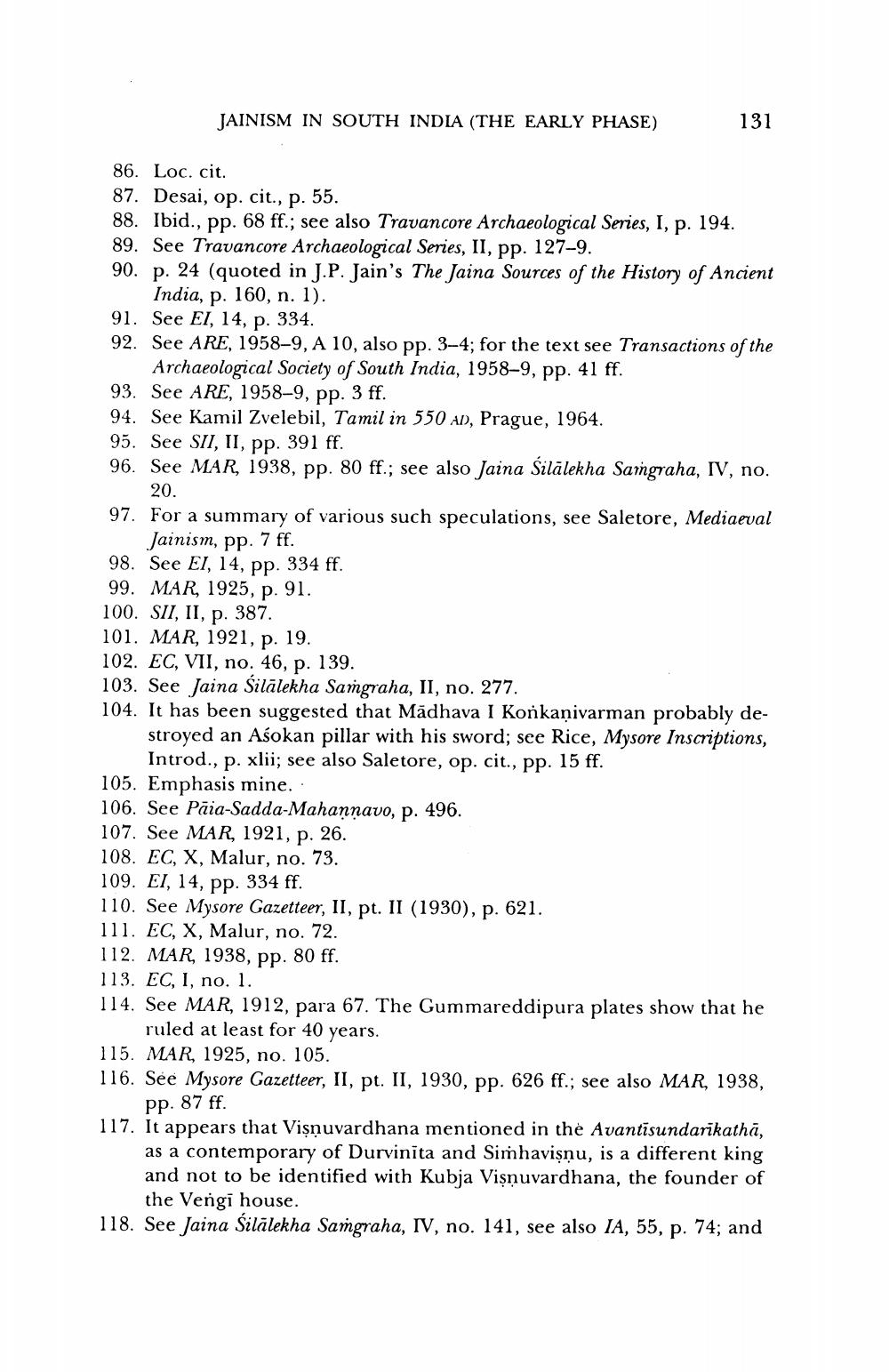________________
JAINISM IN SOUTH INDIA (THE EARLY PHASE)
131
86. Loc. cit. 87. Desai, op. cit., p. 55. 88. Ibid., pp. 68 ff.; see also Travancore Archaeological Series, I, p. 194. 89. See Travancore Archaeological Series, II, pp. 127-9. 90. p. 24 (quoted in J.P. Jain's The Jaina Sources of the History of Ancient
India, p. 160, n. 1). 91. See EI, 14, p. 334. 92. See ARE, 1958-9, A 10, also pp. 3-4; for the text see Transactions of the
Archaeological Society of South India, 1958-9, pp. 41 ff. 93. See ARE, 1958-9, pp. 3 ff. 94. See Kamil Zvelebil, Tamil in 550 AD, Prague, 1964. 95. See SII, II, pp. 391 ff. 96. See MAR, 1938, pp. 80 ff.; see also Jaina Silalekha Sangraha, IV, no.
20.
97. For a summary of various such speculations, see Saletore, Mediaeval
Jainism, pp. 7 ff. 98. See EI, 14, pp. 334 ff. 99. MAR, 1925, p. 91. 100. SII, II, p. 387. 101. MAR, 1921, p. 19. 102. EC, VII, no. 46, p. 139. 103. See Jaina Silālekha Sangraha, II, no. 277. 104. It has been suggested that Madhava I Konkanivarman probably de
stroyed an Aśokan pillar with his sword; see Rice, Mysore Inscriptions,
Introd., p. xlii; see also Saletore, op. cit., pp. 15 ff. 105. Emphasis mine.. 106. See Pāia-Sadda-Mahannavo, p. 496. 107. See MAR, 1921, p. 26. 108. EC, X, Malur, no. 73. 109. EI, 14, pp. 334 ff. 110. See Mysore Gazetteer, II, pt. II (1930), p. 621. 111. EC, X, Malur, no. 72. 112. MAR, 1938, pp. 80 ff. 113. EC, I, no. 1. 114. See MAR, 1912, para 67. The Gummareddipura plates show that he
ruled at least for 40 years. 115. MAR, 1925, no. 105. 116. See Mysore Gazetteer, II, pt. II, 1930, pp. 626 ff.; see also MAR, 1938,
pp. 87 ff. 117. It appears that Vişnuvardhana mentioned in the Avantisundarikathā,
as a contemporary of Durvinita and Simhavişnu, is a different king and not to be identified with Kubja Visnuvardhana, the founder of
the Vengi house. 118. See Jaina Šilālekha Saṁgraha, IV, no. 141, see also IA, 55, p. 74; and




